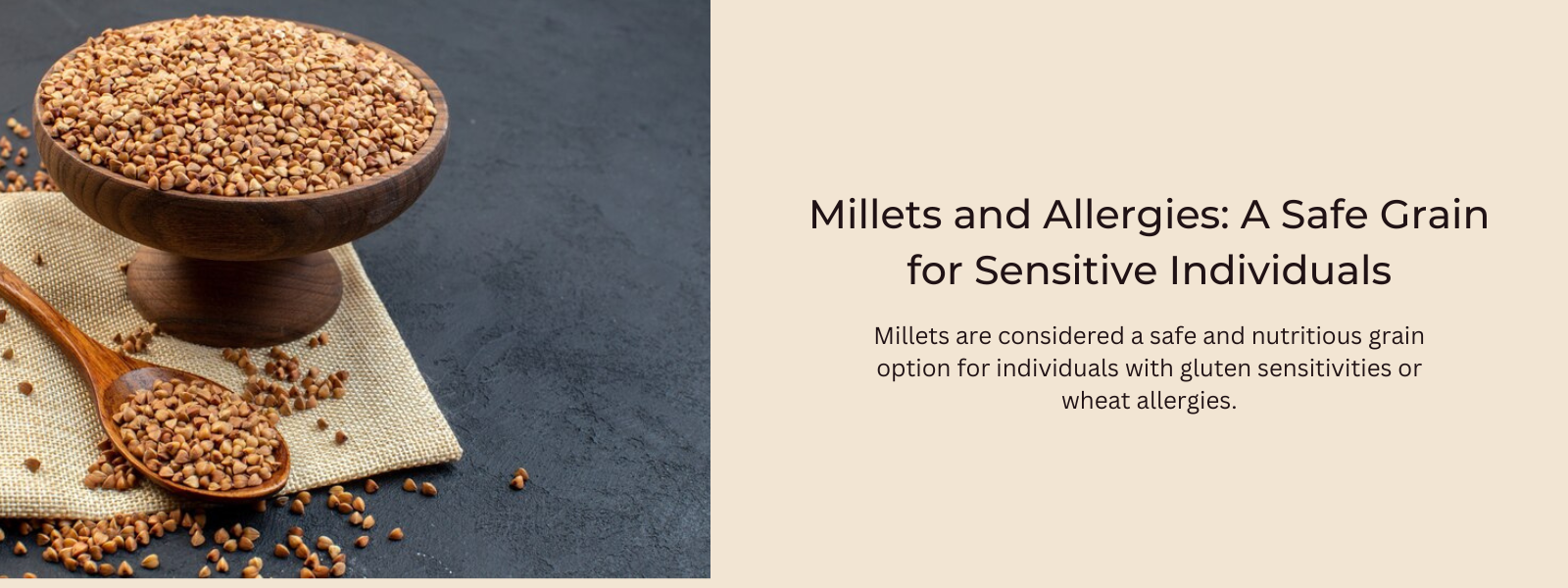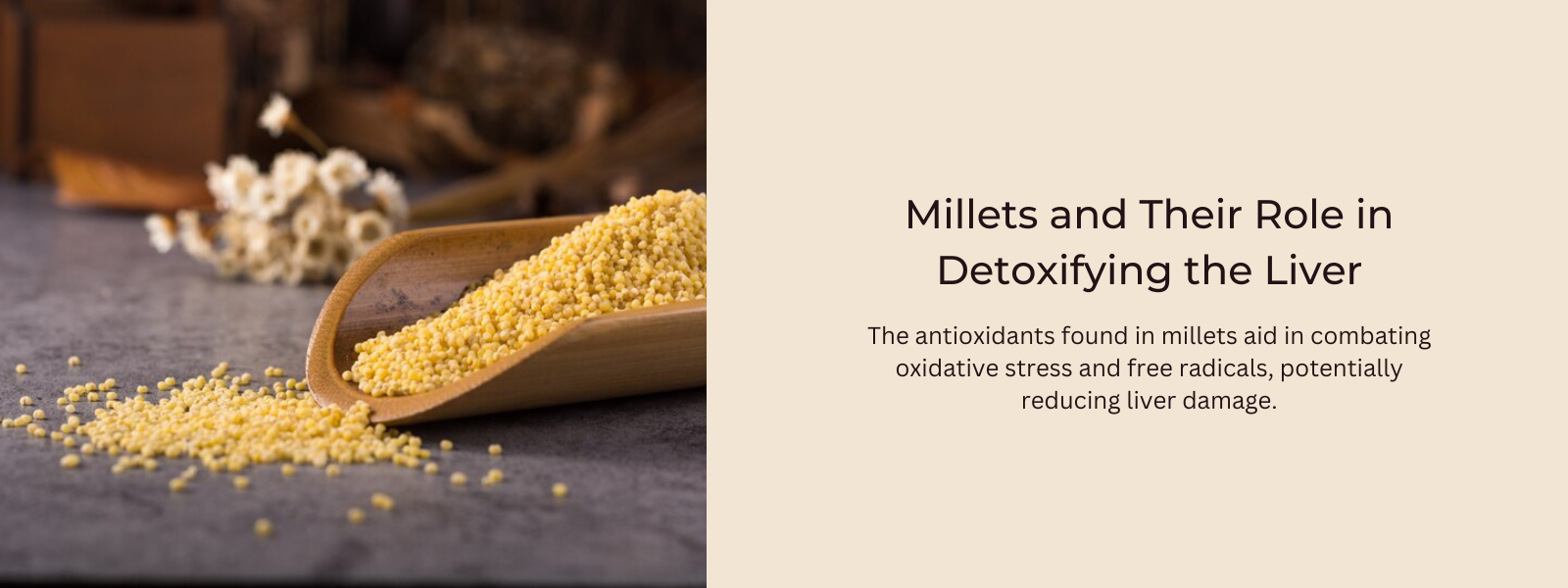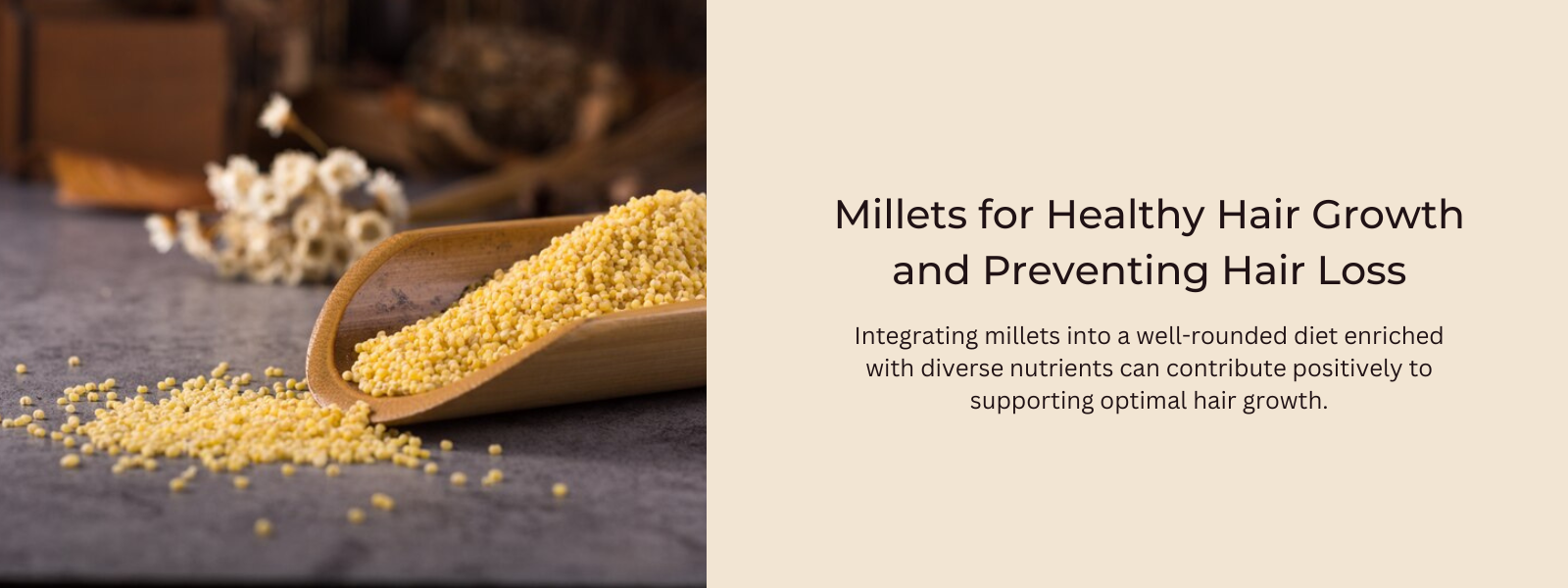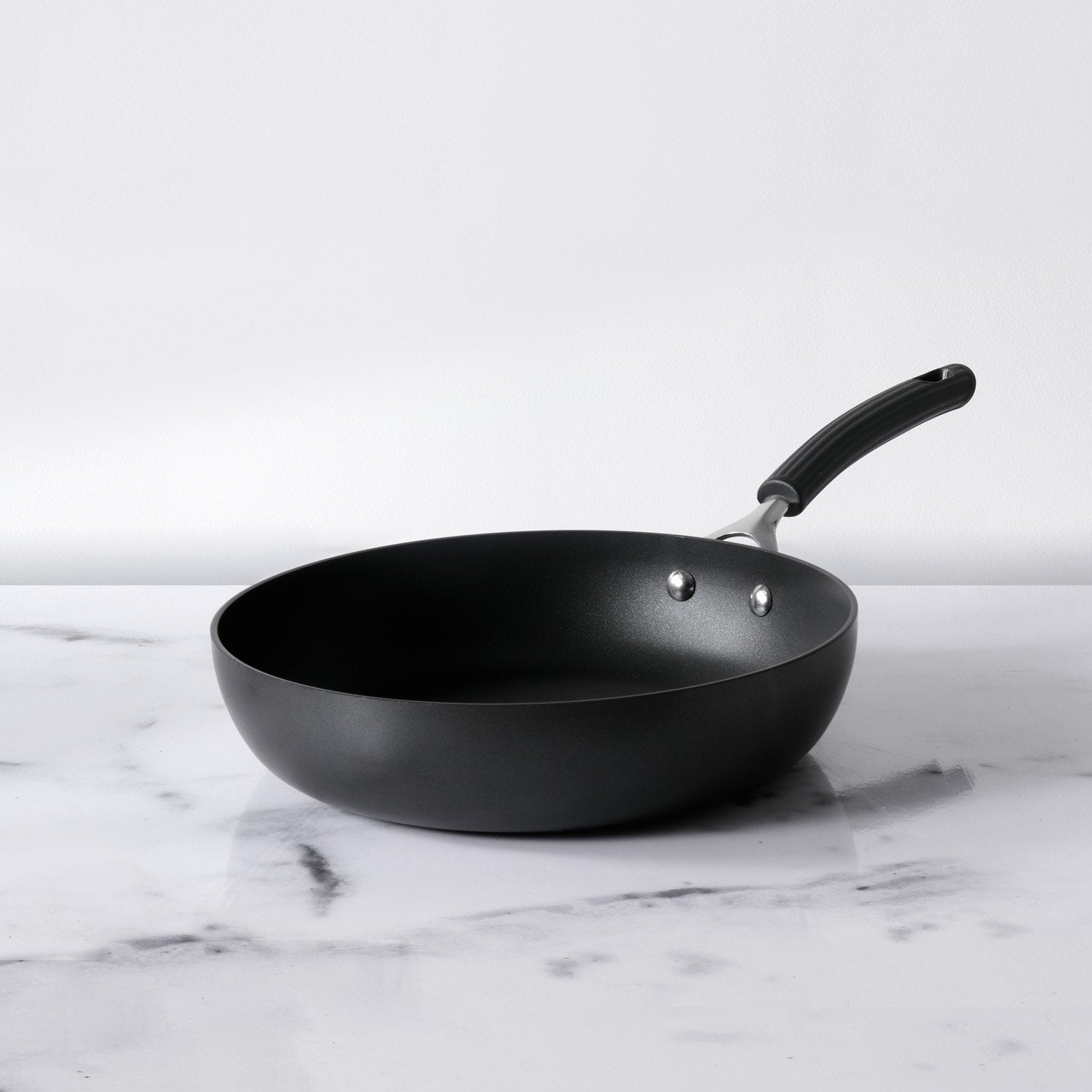Millets can be a valuable asset in weight management due to their high fiber content, slow-digesting carbohydrates, and low glycemic index. These qualities promote a feeling of fullness, steady blood sugar levels, and reduced cravings for calorie-dense foods, all of which contribute to better weight control. Their nutrient density ensures that you receive essential vitamins and minerals while feeling satisfied. Additionally, millets are gluten-free, making them a safe choice for those with gluten-related conditions. Their versatility allows for incorporation into a variety of recipes. While millets can be a supportive part of a weight management plan, it's essential to maintain a balanced diet, watch portion sizes, and engage in regular physical activity for overall success in weight management.
Table of Contents
How Does Millet Help In Weight Loss?
Millet can be a helpful component of a weight loss strategy for several reasons:
- High in Dietary Fiber: Millets are rich in dietary fiber, which adds bulk to your meals, increases feelings of fullness, and reduces overall calorie intake. This can help prevent overeating and support weight loss.
- Slow-Digesting Carbohydrates: The complex carbohydrates in millets are digested slowly, leading to a gradual and sustained release of energy. This helps maintain stable blood sugar levels, reducing cravings for high-sugar, high-calorie snacks.
- Low Glycemic Index (GI): Many millets have a low glycemic index, meaning they have a minimal impact on blood sugar levels. Low-GI foods can help control hunger and reduce the likelihood of overeating.
- Nutrient Density: Millets are packed with essential vitamins and minerals, ensuring that you receive the nutrients you need while managing your weight.
- Balanced Macronutrients: Millets contain a balanced combination of carbohydrates, proteins, and healthy fats. This balance can help regulate energy levels and reduce the risk of overconsumption.
- Gluten-Free: Millets are naturally gluten-free, making them a suitable choice for individuals with celiac disease or those following a gluten-free diet.
- Versatility: Millets can be used in a wide range of recipes, offering diverse culinary options for those on a weight loss journey.
Can Millets Be Used Instead Of Wheat To Prepare Roti?
Yes, millets can be used as a nutritious and gluten-free alternative to wheat in making roti or flatbreads. Millets like pearl millet (bajra), finger millet (ragi), and sorghum (jowar) are commonly used in various regions to prepare flatbreads. To make millet roti, you can follow a similar process to wheat roti, where you mix millet flour with water and a pinch of salt to form a dough. Then, you can shape the dough into small rounds, flatten them, and cook them on a hot griddle or pan until they are cooked through.
Millet rotis have a distinct flavor and can be slightly denser than wheat rotis, but they offer a unique taste and a wealth of nutritional benefits. They are an excellent choice for individuals with gluten intolerance or those looking to diversify their grains while enjoying the health advantages of millets.
Difference Between Wheat and Millet:
Wheat and millet are both cereal grains, but they have some key differences:
- Gluten Content:
- Wheat contains gluten, a protein that provides elasticity and structure to dough, making it a staple in bread and pasta production. Millet is naturally gluten-free. This makes it a safe choice for individuals with celiac disease or non-celiac gluten sensitivity.
- Nutritional Profile:
- Wheat is higher in protein than millet and is a good source of essential amino acids. Millet is rich in dietary fiber, vitamins (especially niacin and B vitamins), and minerals (such as magnesium, phosphorus, and manganese).
- Carbohydrate Profile:
- Wheat is a starchy grain with complex carbohydrates, making it a significant source of energy. Millet also contains complex carbohydrates but has a lower glycemic index, which means it has a smaller impact on blood sugar levels.
- Culinary Uses:
- Wheat is commonly used to make bread, pasta, and various baked goods. Millet is versatile and can be used in a wide range of dishes, such as porridge, pilaf, couscous, and even as a gluten-free flour for baking.
- Cultural Usage:
- Wheat is a staple grain in many parts of the world, particularly in Europe, North America, and some parts of Asia. Millet is more commonly consumed in Africa, India, and parts of Asia.
- Growing Conditions:
- Wheat is typically grown in temperate climates and requires specific conditions, such as cold winters, to thrive. Millet is more adaptable and can grow in a wider range of climates, including arid and semi-arid regions.
- Grain Size:
- Wheat grains are larger and typically oval or elongated in shape. Millet grains are smaller and round or spherical.
- Color:
- Wheat grains can vary in color, including red, white, and whole wheat. Millet grains are typically pale yellow, white, or gray.
Is Millet A Popular Grain?
Millet is indeed a popular grain in many parts of the world, especially in regions like Africa, India, and some parts of Asia. It has been a traditional staple in these areas for centuries due to its versatility, adaptability to various climates, and nutritional benefits. Millet is used to make a wide range of dishes, including porridge, pilaf, flatbreads, and couscous. It is also used as birdseed in some parts of the world.
In recent years, millet has gained attention in other parts of the world as well, particularly among those looking for gluten-free and nutritious alternatives to wheat and other grains. Its popularity has grown due to its health benefits, such as being a good source of dietary fiber, vitamins, and minerals, and its use in various gluten-free and health-conscious recipes.
While millet may not be as widely consumed in some Western countries as wheat or rice, its popularity is on the rise, and it is increasingly recognized as a nutritious and versatile grain option.










Leave a comment